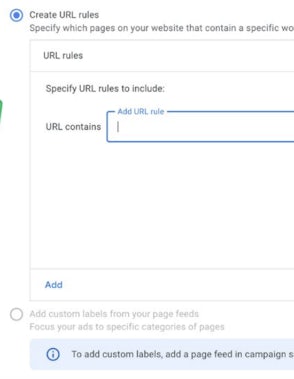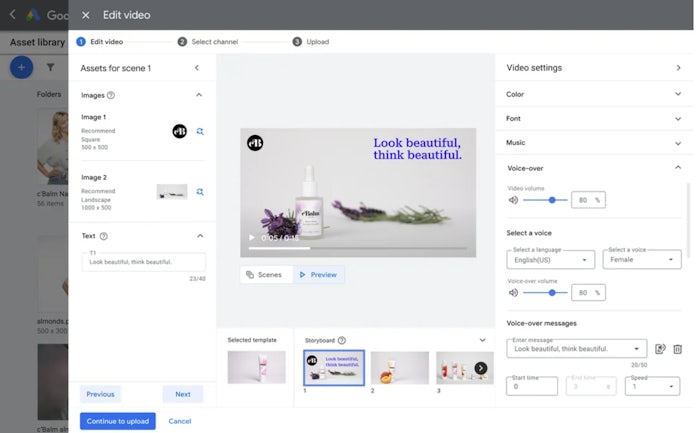Welcome to Impression’s Paid Search Industry Updates for September, where we uncover the latest PPC trends to help you stay ahead of the curve.
As usual, traffic light imagery is featured throughout to indicate the importance of each new update – red denoting a priority update, green representing a less important update and amber lying somewhere in the middle.
Keep reading to discover:
URL contains functionality now added to Performance Max

Kicking things off in September is the latest edition to the Google Ads toolkit, ‘URL contains targeting’ functionality on Performance Max.
This new feature has been rolled out to help support Dynamic Search Ads use cases in Performance Max to better support the voluntary upgrade that was announced in July.
Essentially, URL contains targeting enables advertisers to specify which URL your Performance Max ads will show on, allowing Google Ads to only direct users to pages that contain specific URLs which in turn, will help fine-tune varying ad placements based on the web addresses that potential customers visit.
What does this mean for me?
This new functionality allows marketers to create a more tailored ad experience. Ensuring that your ads are seen by users who are actively engaged with content that is related to your product or service helps to increase the overall relevance of your ads, thereby increasing click-through rates.
Whilst offering marketers increased control of their ad targeting, this feature does increase the speculation around the phasing out of Dynamic Search Ads in favour of Performance Max.

Source: Ads expert Thomas Eccel on Linkedin
Microsoft Advertising introduces Performance Max campaigns

Following the success of Performance Max campaigns in Google Ads, Microsoft Ads has also launched its own Performance Max campaign to enhance its competitiveness in the market. This new campaign type will leverage AI for a more efficient way to target users. Initially, Microsoft’s Performance Max was only available in a beta version, but it is now available to all advertisers in the UK.
Performance Max brings a wide array of benefits, as ads will be served dynamically across all Microsoft’s properties from Bing, AOL, Yahoo, MSN, and Edge to Outlook. Moreover, leveraging automation and AI, the campaign will showcase the right ad creative to the best audiences, while simplifying work for marketers and providing valuable insights. Similarly to Google Ads, you will be able to add audience signals and enable final URL expansion, which offers you more personalization opportunities.
Before setting up the first Performance Max campaign, advertisers should ensure their conversion goals are set up with Universal Event Tracking (UET) and, in the situation where the campaign uses maximise conversion value as a bidding strategy, marketers should enable revenue tracking. Moreover, for e-commerce advertisers, an active product feed needs to be added to the Microsoft Merchant Centre.
What does this mean for me?
Considering the importance of multi-channel advertising, Microsoft Ads is bringing a new way for advertisers to showcase their offerings and be top of mind for potential customers. To remain competitive and ahead of the curve, it is important for advertisers to test Performance Max campaigns in their Microsoft Ads accounts and to leverage all of the features that Performance Max offers.
AI-powered video creative in Google Ads

AI is helping to reshape the YouTube landscape, with Google announcing some brand new features to help video advertisers by giving them increased creative guidance and AI-driven video campaign solutions.
Google’s latest offering leverages creative guidance in Google Ads, using AI to detect best practice elements within a video. For example, it’s able to check whether a video includes the brand logo within the first 5 seconds, whether the video contains a voiceover, if the video follows the recommended video length for the marketing objective (6 and 15 seconds for Awareness, 1 to 3 minutes for Consideration, and 15 seconds for Action) and also, being able to detect if the ad group includes at least one of all three video orientations (horizontal, vertical and square).
From here, advertisers are able to see a tab that’s labelled as ‘Analytics’ where this feature will list any missing creative attributes and suggest ways to improve them.

Source: YouTube’s AI-powered solutions enhance ad creativity
What does this mean for me?
These new features should empower marketers to take charge of their creative and reap the benefits that AI helps to support extensive creative execution and analysis for video campaigns.
This is just the beginning for Google, with plans to expand the variety of attributes that AI can analyse to help deliver increasing value to marketers. With technology continuing to advance, we can expect AI to help promote more meaningful interactions, data-driven analysis and therefore greater return on investment.
It’s important for advertisers to remember that AI is only able to provide recommendations based on historical data and best practices. With this, it’s essential to note that some recommendations may not adhere to the brand’s strategy without historical data.
Microsoft Ads launches video and CTV campaigns

Microsoft is finding new ways to enhance their Ads offering and has announced the introduction of a new campaign type to their portfolio – Video and CTV campaigns.
The unique selling point of Video ads is the placements they appear on, from streaming platforms like Max, Hulu and Bloomberg to websites such as MSN, People, Wall Street Journal and Huffington Post. This represents a significant benefit, as it substantially increases the number of users ads will be served to – platforms not available in Google Ads Video Campaigns.
Moreover, Video and CTV campaigns will use audience intelligence and billions of first-party data points which results in your ads being served to the most relevant users for your business. This first-party data is exclusively available in Microsoft, because it is search and web activity from Bing, Microsoft Eds and Microsoft Start. Following the gathering of data, Microsoft applies machine learning algorithms to find the ideal audiences – this is based on product and brand preferences, purchasing behaviour and user location.

All campaign types available in Microsoft Ads
What does this mean for me?
With people watching on average over 3 hours of videos each day, there is significant potential for advertisers to tap into this trend and showcase their offerings through video creatives. Therefore, marketers should definitely launch Video and CTV campaigns in Microsoft Ads to complement their existing ad formats and engage customers across all parts of the funnel.
Look out for our next blog in October for more paid search industry updates to inspire your PPC strategy. If you want to talk about your business aspirations, get in touch!



